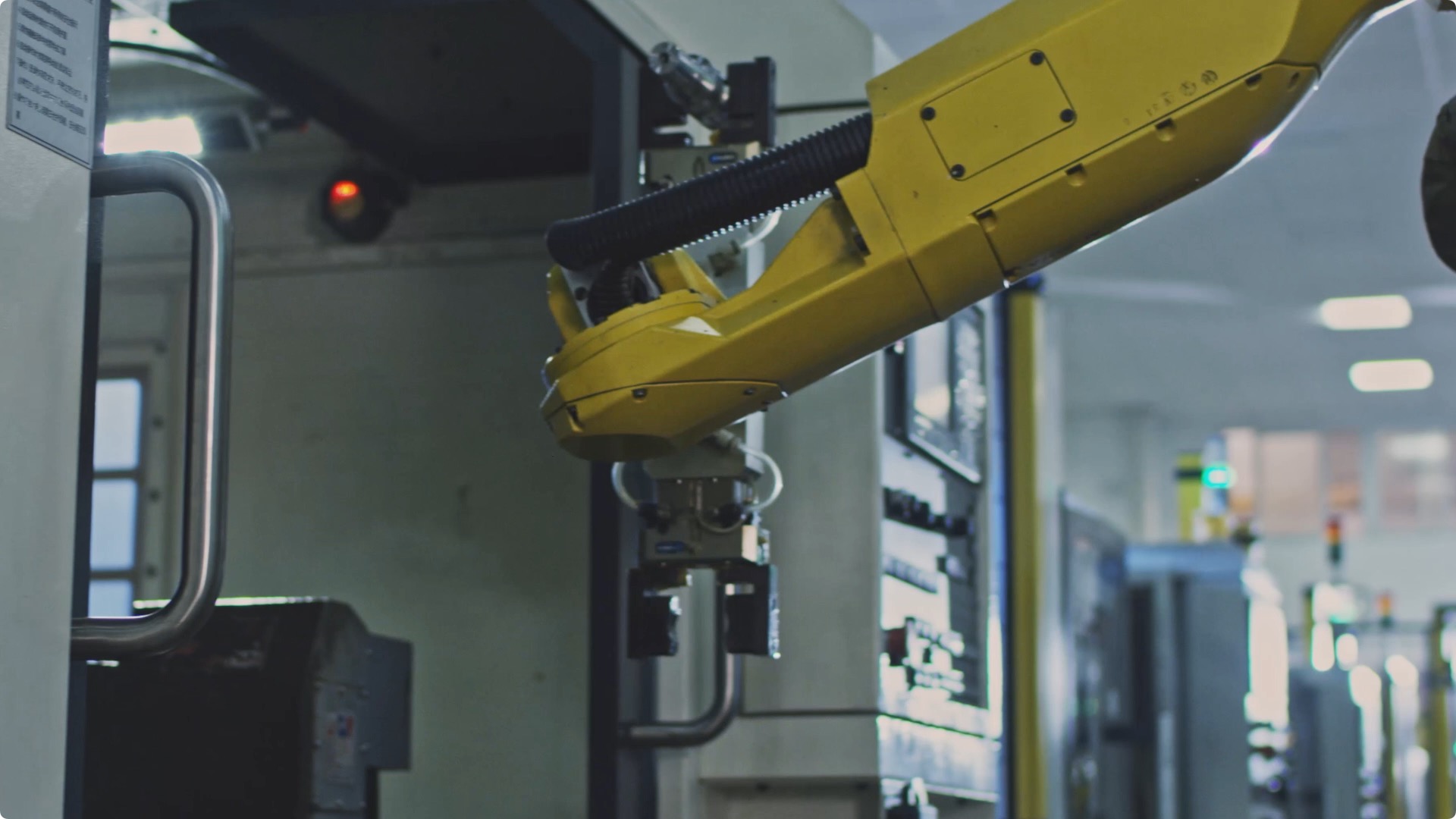With the rapid development of industrial automation, manipulators have become an indispensable part of modern manufacturing. The advent of the manipulator not only greatly improves production efficiency, but also provides a new solution for enterprises that focus on safe production, improve work efficiency, reduce costs, and protect the health of employees. The manipulator can replace the manual work to complete different process steps, and the main functions include gripping, welding, spraying, cleaning and material handling. The comprehensive coverage of these functions makes it possible to realize the fully automated factory of the future.
The main function of manipulators in the manufacturing industry
1.Carry somebody awayWith intelligent sensing and precise control, the manipulator can accurately grasp objects of different sizes, shapes and materials, and is mainly used in sheet metal processing.
2.weld: The manipulator has high precision and consistency in welding, and meets the high requirements of H-beam welding and laser cutting processes for welding quality.
3.Spraying: For the coating process, the manipulator ensures uniform coverage and reduces coating waste.
4.cleaningIn industries with high cleanliness requirements, such as the production of electronics and medical devices, robots can perform contamination-free cleaning.
5.Material handling: With an automated material handling system, the robot increases productivity and reduces the risk of work-related injuries. For example, in punch lines, robots significantly reduce manual labor, increase efficiency, and protect the safety of employees.
Advantages of manipulators
1.Increase efficiency: The manipulator can work continuously without interruption, which significantly improves the efficiency of the production line.
2.Reduce costs: Manipulators help enterprises save labor costs by replacing certain manual positions.
3.Safety and securityThe manipulator operates in a hazardous environment, reducing the risk of personnel coming into direct contact with hazards.
4.Improve product qualityThe manipulator can effectively prevent quality problems caused by human error through precise operation.
5.Flexible adaptabilityBy changing tools or adjusting programs, the manipulator can meet a wide range of production needs.
Application scenarios of manipulators
1.Steel structure processing: H-beam welding adopts manipulator to improve production efficiency and product quality.
2.Sheet metal fabrication: The manipulator works in conjunction with a CNC press brake to achieve high-precision work and reduce the need for manual labor.
3.Spraying process: Used in painting or painting shops, the manipulator increases efficiency and reduces the risk of injury to workers.
4.Warehousing industry: In automated warehousing, manipulators are used for sorting and material handling.
5.Component molding processing: Robots play a key role in precision machining and part production, greatly improving efficiency and ensuring product consistency.
Future Trends
1.Smart and connectedWith the advancement of artificial intelligence and IoT technology, the manipulator will become more intelligent and achieve better connectivity with other devices.
2.Versatile integrationThe robots of the future will be even more versatile and capable of performing several complex tasks at the same time.
3.Reduce costsWith the maturity of technology and mass production, the procurement and maintenance costs of manipulators will be reduced.
4.Wider range of applications: Manipulators will gradually penetrate into more industries and application scenarios, driving automation transformation in various fields.
Frequently Asked Questions (FAQs)
Q1: Can the manipulator completely replace manual labor?
A1: Manipulators can completely replace manual labor in specific tasks and hazardous environments. However, in processes that require complex judgment and adaptability, manpower still has an irreplaceable advantage.
Q2: Is the manipulator suitable for small and medium-sized enterprises?
A2:Absolute. With the reduction of the cost of manipulators, small and medium-sized enterprises can also improve production efficiency and competitiveness by adopting manipulators.
Q3: Is the maintenance cost of the manipulator high?
A3: The maintenance cost of the manipulator is relatively moderate. They mainly involve regular lubrication, replacement of wear parts, and software upgrades. Proper maintenance can significantly extend the life of your equipment.
Q4: Can the manipulator adapt to different production requirements?
A4:Yes. By changing tools or reprogramming, the gripper has the flexibility to meet a wide range of production specifications and processes.
Q5: Does the manipulator need professional skills to work?
A5: Workers need basic training, but the interface of modern manipulators is becoming more and more user-friendly, which greatly shortens the learning curve.
People also asked
Q1: Which manipulators are recommended to use to save labor costs?
A1Recommended brands include ESTUN, FANUC, ABB, KUKA and Yaskawa, which offer high-quality robots for a variety of industries.
Q2: How to evaluate the ROI of the manipulator?
A2: ROI can be assessed by considering labor cost savings, increased capacity, and the life of the equipment.
Q3: What industries is the manipulator most suitable for?
A3Industries such as automotive manufacturing, electronics assembly, food processing, and logistics and warehousing are ideal for robots.
Q4: What should I consider when buying a manipulator?
A4: Consider the manipulator's function, load capacity, compatibility with the control system, and after-sales service. For flow cytometry products, choose a reliable manufacturer and, for specific models, perform connection tests to ensure consistent and reliable operation with other devices. For complete projects, it is important to work with a knowledgeable team to ensure that the robot integrates perfectly with other equipment.
Q5: Can the manipulator be completely unmanned?
A5In a highly automated factory, the robot can be partially or completely unmanned, but still needs to be monitored and maintained.
conclusion
As a key driver for the modernization of the manufacturing industry, manipulators are already playing an important role in various fields. Their efficiency, safety, and versatility not only increase production efficiency, but also lay the foundation for full automation in the future. Through continuous optimization and innovation, the manipulator will show its potential in more fields and contribute to the transformation and upgrading of the global manufacturing industry.



